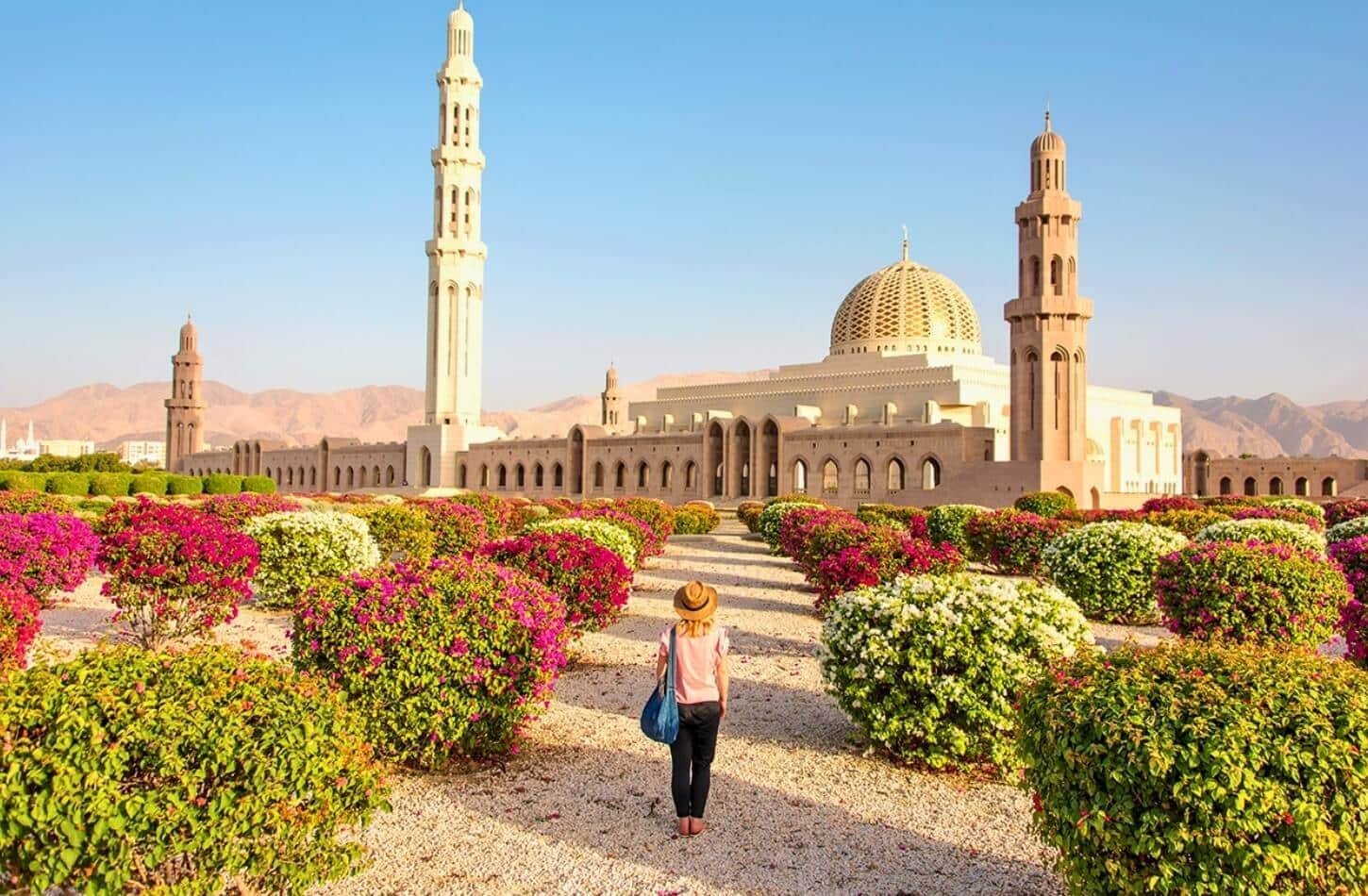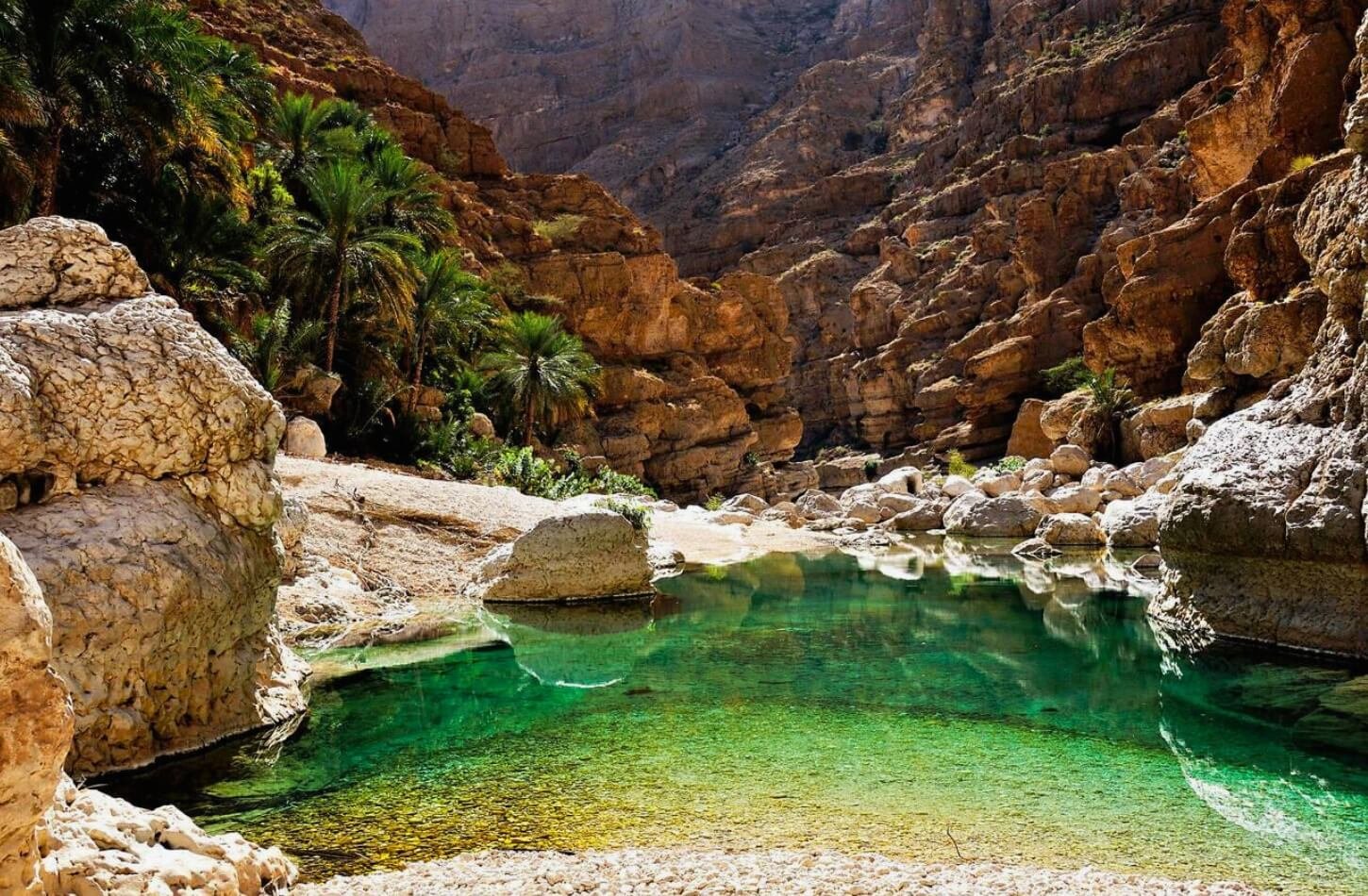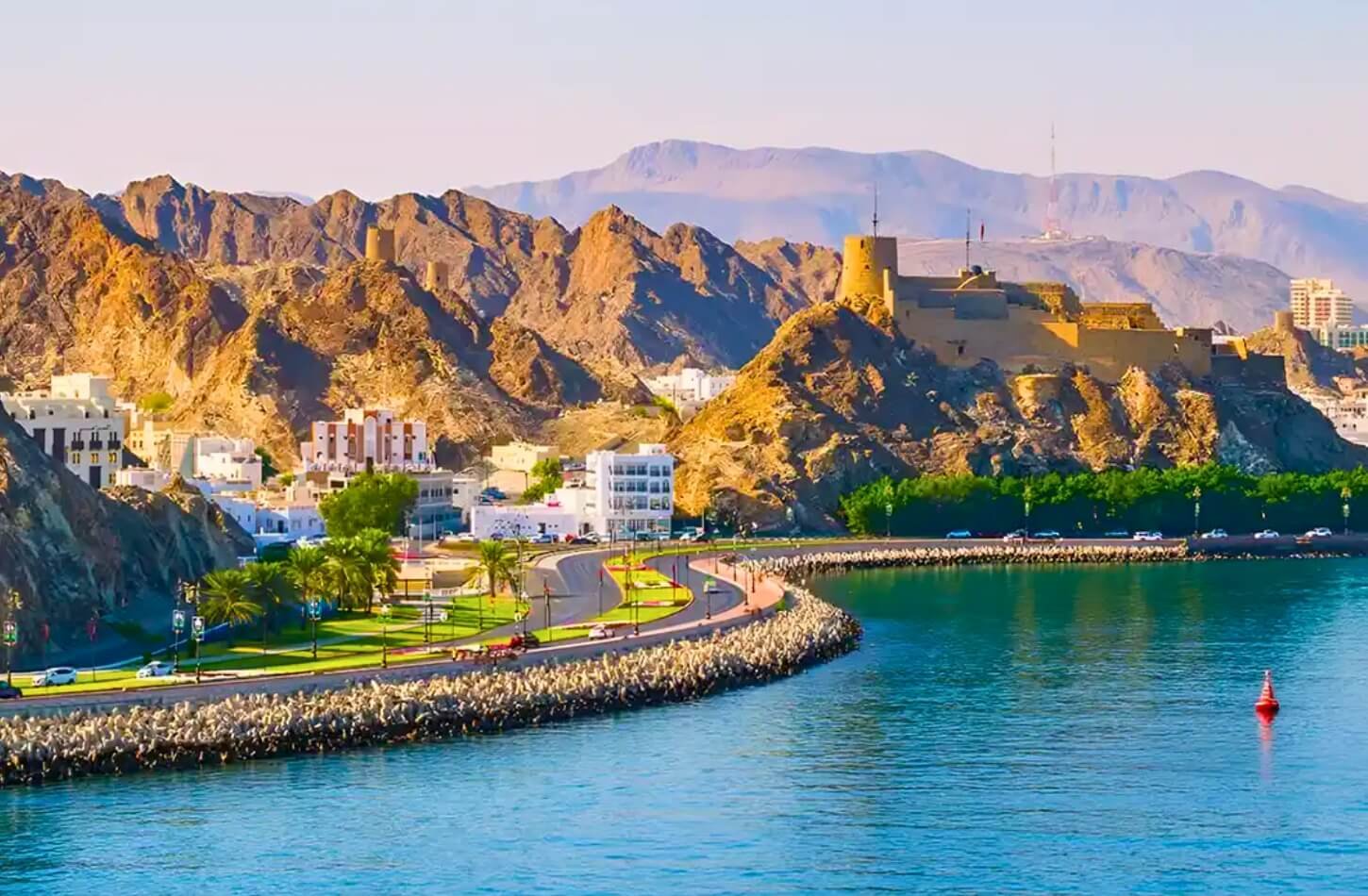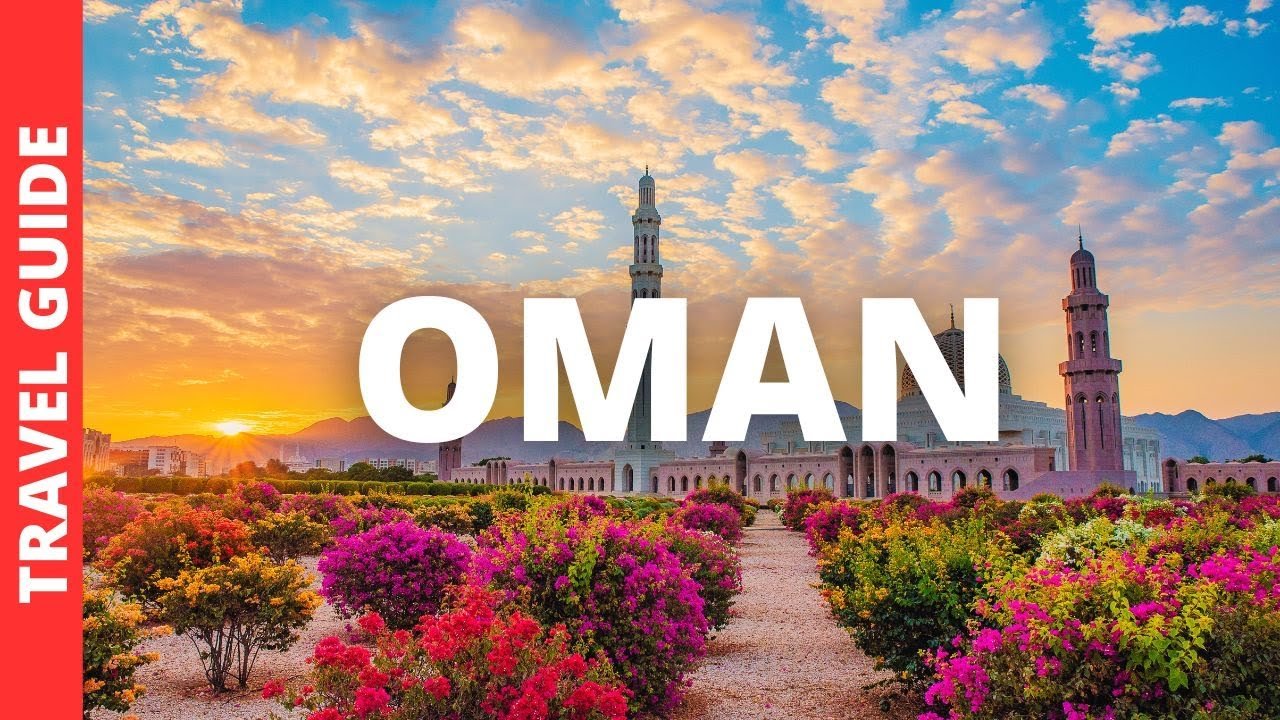Oman, the jewel of the Arabian Peninsula, is a land where golden deserts meet turquoise seas and rugged mountains blend with lush oases. From ancient forts to untouched beaches and stunning wadis, this country offers year-round charm — but knowing the best time to visit Oman can make your journey even more unforgettable.
Because Oman’s weather changes dramatically across its regions, the timing of your visit can greatly influence your experience. Whether you’re planning a desert adventure, a cultural exploration, or a monsoon escape in Salalah, understanding Oman’s seasons will help you plan your ideal holiday.
In this guide, you’ll discover everything — the best seasons, festivals, and travel tips, plus what to do, where to go, and when to visit each region for your ideal Oman adventure.
Plan wisely! Make your trip unforgettable by choosing the best time to visit Oman and joining one of our expertly guided Oman Tours that let you enjoy the country’s top attractions at their finest.
The Best Time to Visit Oman Overall: October to April
The cool season from October to April is widely considered the best time to visit Oman. During these months, the weather is pleasantly warm and sunny — ideal for exploring cities, deserts, and coastlines.
Why This Season Is Ideal
- Perfect sightseeing weather: Clear skies, comfortable temperatures, and minimal humidity.
- Outdoor adventures: From dune bashing and snorkeling to mountain hiking.
- Festivals and cultural events: Many of Oman’s major celebrations take place during winter.

Seasonal Breakdown: When to Visit Oman by Season
Winter (October – April): The Peak Travel Season
Winter in Oman is pure perfection. With clear blue skies and pleasant temperatures between 20°C and 30°C, it’s the ideal time to explore the country’s stunning natural wonders and historical treasures. From golden deserts to ancient forts, this season offers everything that makes Oman so special.
Top Things to Do in Oman During Winter
- Explore Muscat’s Cultural Icons:
Begin your journey in the capital city, Muscat, where modern sophistication meets traditional charm. Visit the majestic Sultan Qaboos Grand Mosque, one of the most beautiful mosques in the Middle East, admire the architecture of the Royal Opera House, and stroll along the Muttrah Corniche to browse local treasures at the Muttrah Souq. - Discover Oman’s Historical Heart in Nizwa:
The Nizwa Fort, with its massive circular tower and panoramic views, is one of the country’s most important historical landmarks. Nearby, the Nizwa Souq offers authentic Omani handicrafts, silver jewelry, and spices — perfect for immersing yourself in local culture. You can also visit Bahla Fort, a UNESCO World Heritage Site, and the traditional villages of Al Hamra and Misfat Al Abriyeen, where mud-brick houses and ancient irrigation systems tell stories from centuries past. - Experience the Magic of Oman’s incredible landscapes:
Winter is the best time to explore Oman’s Natural Wonders.- Hike the dramatic cliffs of Jebel Shams, known as the Grand Canyon of Arabia, for breathtaking views.
- Wander through the green terraces of Jebel Akhdar, famous for its rose gardens and mountain villages.
- Swim in the turquoise pools of Wadi Shab or Wadi Bani Khalid, two of the most beautiful oases in Arabia.
- Visit the Bimmah Sinkhole, a natural limestone crater filled with clear blue water — a great spot for swimming and photography.
- Desert Adventure in Wahiba Sands:
Ride a camel or go dune bashing across the Wahiba Sands, where the ever-shifting dunes glow orange under the winter sun. Spend a night in a Bedouin-style desert camp to experience traditional Omani hospitality and stargaze under crystal-clear skies. - Relax by the Coast:
Winter is also the perfect time to enjoy Oman’s coastline. Relax on the golden sands of Qurum Beach or Al Bustan Beach, or take a day trip to Sur to see the traditional dhow shipyards and visit the Ras Al Jinz Turtle Reserve, where you might witness green turtles nesting on the beach.
Summer (May – September): Hot, But Not Without Charm
Summer in Oman can be extremely hot, especially in the interior deserts and Muscat, where temperatures often exceed 40°C. However, there’s a magical exception — Salalah.
The Khareef Season (July to September) in Salalah
Salalah transforms into a green paradise during the Khareef monsoon. Gentle rains blanket the hills, turning them into lush, misty landscapes — a rare sight in the Arabian Peninsula.
Top attractions in Salalah during Khareef:
- Wadi Darbat: Waterfalls, lakes, and picnic spots.
- Mughsail Beach: Dramatic cliffs and blowholes that spray seawater high into the air.
- Jabal Samhan: Scenic viewpoints and cooler temperatures.
- Frankincense Land Museum: Learn about Oman’s ancient incense trade.
If you want to escape the desert heat and enjoy a refreshing atmosphere, Salalah is the place to be.

Month-by-Month Guide: When to Go to Oman
January – February
- Peak tourist season with cool, sunny days.
- Ideal for sightseeing, cruises, and beach holidays.
- Events: Muscat Festival (cultural performances, local crafts, and food).
March – April
- The weather starts warming, perfect for diving and snorkeling in the Daymaniyat Islands.
- Great time for desert camping before the summer heat sets in.
May – June
- Temperatures rise significantly; fewer crowds and discounted hotel rates.
- Good time for cultural experiences in Muscat’s air-conditioned attractions.
July – August
- Head south to Salalah for the Khareef Festival and monsoon greenery.
- Expect cooler temperatures and foggy mountain scenery.
September – October
- Transitional months with pleasant weather returning to most regions.
- Ideal for exploring forts, wadis, and coastal cities.
November – December
- Prime months for all kinds of travel.
- The sea is calm for cruises, and deserts are cool for camping.
- Events: National Day celebrations and traditional festivals.
Best Time to Visit Oman Based on Your Interests
1. For Cultural and Historical Exploration
Best Months: November – March
Explore Muscat’s historic quarters, Nizwa Fort, Bahla Fort, and Al Hamra Village. Visit local souqs for silver jewelry, pottery, and frankincense.
2. For Beach and Coastal Escapes
Best Months: October – April
Enjoy Qurum Beach, Ras Al Jinz (turtle nesting site), and Sur, known for its dhow-building heritage. Go snorkeling in Daymaniyat Islands for coral reefs and marine life.
3. For Desert Adventures
Best Months: November – March
Experience dune bashing and camel rides in Wahiba Sands or Rub Al Khali (Empty Quarter). Overnight in luxury desert camps under the starlit sky.
4. For Nature and Green Escapes
Best Months: July – September
Discover Salalah’s lush mountains, waterfalls, and tropical scenery during the Khareef.
5. For Hiking and Mountain Lovers
Best Months: October – April
Climb Jebel Shams for panoramic canyon views or trek the cool plateaus of Jebel Akhdar.
Top Attractions You Shouldn’t Miss in Oman
1. Muscat
A blend of modernity and tradition. Don’t miss:
- Sultan Qaboos Grand Mosque – one of the most beautiful mosques in the Middle East.
- Muttrah Corniche & Souq – a scenic waterfront promenade and lively market.
- Royal Opera House – architectural masterpiece showcasing Omani culture.
2. Nizwa
The former capital of Oman, famous for:
- Nizwa Fort – a 17th-century fortress with panoramic views.
- Nizwa Souq – great for traditional crafts, spices, and silverware.
3. Wahiba Sands
An ocean of golden dunes stretching endlessly. Ideal for:
- Camel rides, sandboarding, and Bedouin-style camping.
4. Jebel Shams
Known as “The Grand Canyon of Arabia”, it’s perfect for hiking and photography.
5. Wadi Shab & Wadi Bani Khalid
Two of Oman’s most beautiful oases. Swim in turquoise pools surrounded by cliffs.
6. Sur
A coastal gem famous for dhow shipyards and Ras Al Jinz Turtle Reserve, where green turtles lay their eggs.
7. Salalah
Tropical scenery, white-sand beaches, and monsoon greenery — a true contrast to the rest of Oman.
Compare Oman’s Weather with Nearby Destinations
When travelers compare the best time to visit Oman with nearby Gulf destinations like Dubai, Qatar, or Abu Dhabi, Oman stands out for its unique natural climate zones.
While most of the Gulf remains hot and dry throughout summer, Oman offers a refreshing contrast thanks to its southern Dhofar region. From June to September, Salalah transforms into a lush paradise during the Khareef (monsoon) season, when temperatures drop to around 20°C and the landscape turns green with waterfalls, mist, and blooming hillsides.
This rare weather phenomenon makes Oman the only Gulf country where summer becomes a high season for nature lovers — ideal for those seeking cool air, mountain drives, and scenic photography.
So, if you’re choosing between Oman vs. Dubai for your next trip, remember:
Dubai is perfect for winter sunshine and luxury shopping.
Oman, however, offers cool monsoon escapes, mountain adventures, and authentic culture — making it a year-round destination for all types of travelers.
Travel Tips by Season
- Clothing: Light cotton clothes for day, light jackets for cooler evenings in winter.
- Sun Protection: Use sunscreen, sunglasses, and hats, especially in desert regions.
- Local Etiquette: Dress modestly, particularly in rural areas and mosques.
- Driving: Roads are excellent, but always carry water and fuel for long trips.
- Accommodation: Book early during peak season (December–March).
Conclusion: Plan Your Perfect Oman Journey
Oman is a destination that offers beauty in every season — from the cool winter months perfect for sightseeing to the lush summer monsoon of Salalah. The best time to visit Oman depends on what you want to experience: desert adventures, mountain hikes, beach relaxation, or cultural exploration.
Whenever you choose to go, Oman’s warmth, hospitality, and stunning natural diversity will leave you enchanted.
Check out these related Oman Travel Inspiration:



